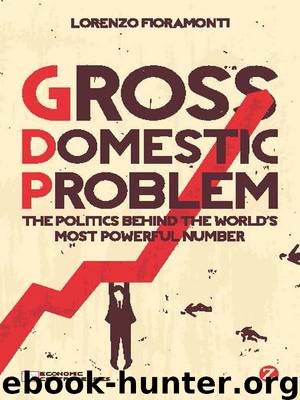Gross Domestic Problem by Lorenzo Fioramonti

Author:Lorenzo Fioramonti
Language: eng
Format: epub
Publisher: Zed Books
Published: 2013-03-25T16:00:00+00:00
CHAPTER 4
Change from below
I don’t believe that the solutions in society will come from the left or the right or the north or the south. … This is how change will appear: you won’t notice the difference. It won’t be anyone winning over anyone. It will just spread. … It will be so natural. It will be something that the intelligent people do.
Karl-Henrik Robèrt, founder of The Natural Step
It was at the end of 2001 when the system collapsed. By then, the Argentinian government had tried all possible avenues to regain investors’ confidence in an effort to prop up its economy. It had bowed to the diktats of financial markets and had followed the IMF’s instructions slavishly. It had implemented a series of unprecedented austerity measures and curtailed public spending. Retirement benefits had been slashed and working hours increased. Yet, unemployment stood at 20 per cent and social discontent was on the rise. Hundreds of supermarkets were shut down after looters broke in and emptied shelves. Angry citizens struck out against banks, businesses and multinational corporations. Confrontations with armed police officers became a daily occurrence, especially when the cacerolazo movement, after the people who banged cacerolas (stew pots) to call for attention, took to the streets of Buenos Aires.
The rating agency Standard & Poors placed Argentina on credit watch. In a wave of collective hysteria, millions of citizens began withdrawing money from their accounts and sent all their savings abroad. In response, the state froze bank accounts and capped the sums of cash available to account-holders. A few weeks later, following the collapse of the currency, the government was forced to default on its debt obligations. Soon, there was no cash at all circulating within the economy.
Bartering began to rise spontaneously in communities, especially on the outskirts of Buenos Aires and in rural areas.1 It was a completely new experience for many Argentinians. Although a red de trueque (bartering network) had been created by a small group of farmers in the early 1980s, few people had any prior knowledge of barter markets, and initially groups of citizens simply showed up at public spaces such as schools, parks and churches.2 They brought used clothes, home-made food and other items with a view to exchanging them. It soon became apparent that communities characterized by higher degrees of local production in value-added areas such as food and clothing had a strong advantage vis-à-vis those that had traditionally relied on large retailing services and imported goods.3 The collapse of the conventional economy also revealed a stark contrast between urban and rural areas. In cities, most bartering dealt in used and second-hand goods such as clothing and furniture as well as services, including healthcare. In spite of their initial reluctance, even nurses and doctors agreed to provide their services in exchange for various types of material goods.4 Nonetheless, a significant portion of the urban population had nothing or little to offer and resorted to scavenging in waste and recycling scraps. In contrast, most rural areas
Download
This site does not store any files on its server. We only index and link to content provided by other sites. Please contact the content providers to delete copyright contents if any and email us, we'll remove relevant links or contents immediately.
| Biomathematics | Differential Equations |
| Game Theory | Graph Theory |
| Linear Programming | Probability & Statistics |
| Statistics | Stochastic Modeling |
| Vector Analysis |
Weapons of Math Destruction by Cathy O'Neil(5036)
Factfulness: Ten Reasons We're Wrong About the World – and Why Things Are Better Than You Think by Hans Rosling(4021)
Factfulness_Ten Reasons We're Wrong About the World_and Why Things Are Better Than You Think by Hans Rosling(2754)
Descartes' Error by Antonio Damasio(2731)
A Mind For Numbers: How to Excel at Math and Science (Even If You Flunked Algebra) by Barbara Oakley(2691)
TCP IP by Todd Lammle(2638)
Applied Predictive Modeling by Max Kuhn & Kjell Johnson(2478)
Fooled by Randomness: The Hidden Role of Chance in Life and in the Markets by Nassim Nicholas Taleb(2412)
The Book of Numbers by Peter Bentley(2403)
The Tyranny of Metrics by Jerry Z. Muller(2401)
The Great Unknown by Marcus du Sautoy(2185)
Once Upon an Algorithm by Martin Erwig(2148)
Easy Algebra Step-by-Step by Sandra Luna McCune(2117)
Practical Guide To Principal Component Methods in R (Multivariate Analysis Book 2) by Alboukadel Kassambara(2092)
Lady Luck by Kristen Ashley(2071)
Police Exams Prep 2018-2019 by Kaplan Test Prep(2032)
Linear Time-Invariant Systems, Behaviors and Modules by Ulrich Oberst & Martin Scheicher & Ingrid Scheicher(1982)
All Things Reconsidered by Bill Thompson III(1960)
Secrets of Creation, Volume 1: The Mystery of the Prime Numbers by Watkins Matthew(1864)
